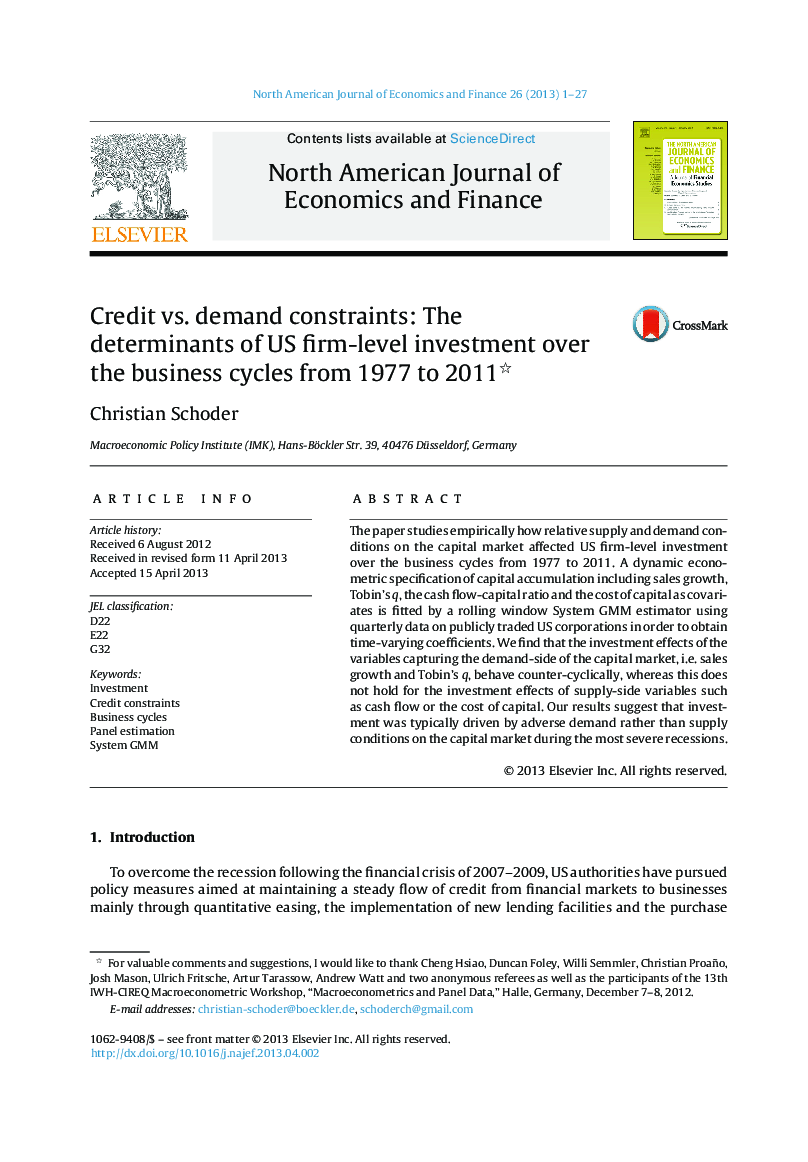| Article ID | Journal | Published Year | Pages | File Type |
|---|---|---|---|---|
| 973355 | The North American Journal of Economics and Finance | 2013 | 27 Pages |
The paper studies empirically how relative supply and demand conditions on the capital market affected US firm-level investment over the business cycles from 1977 to 2011. A dynamic econometric specification of capital accumulation including sales growth, Tobin's q, the cash flow-capital ratio and the cost of capital as covariates is fitted by a rolling window System GMM estimator using quarterly data on publicly traded US corporations in order to obtain time-varying coefficients. We find that the investment effects of the variables capturing the demand-side of the capital market, i.e. sales growth and Tobin's q, behave counter-cyclically, whereas this does not hold for the investment effects of supply-side variables such as cash flow or the cost of capital. Our results suggest that investment was typically driven by adverse demand rather than supply conditions on the capital market during the most severe recessions.
We study empirically relative supply and demand conditions on the capital market affect US firm-level investment expenses over the cycle.A dynamic specification of capital accumulation is fitted by a rolling window System GMM estimator using data on publicly traded US corporations from 1977 to 2011 in order to obtain time-varying coefficients.We find that the demand related measures, sales growth and Tobin's q, have strongly procyclical effects on investment, whereas this does not hold for cash flow or the cost of capital.Our results suggest that investment was driven by inferior demand rather than finance supply conditions during the most severe recessions.
